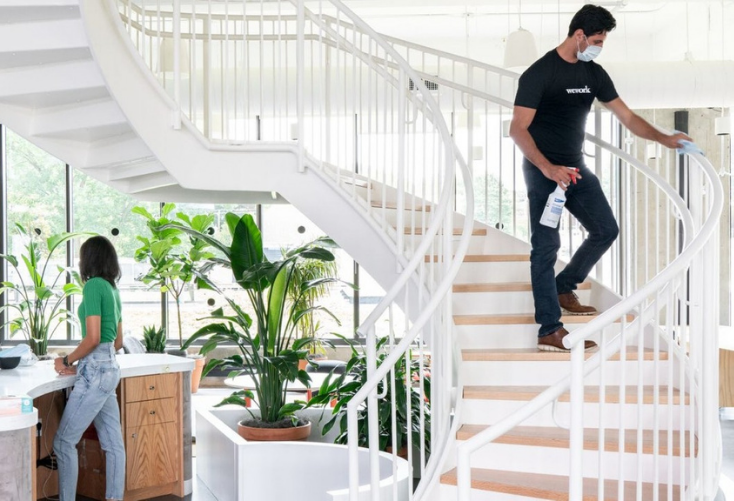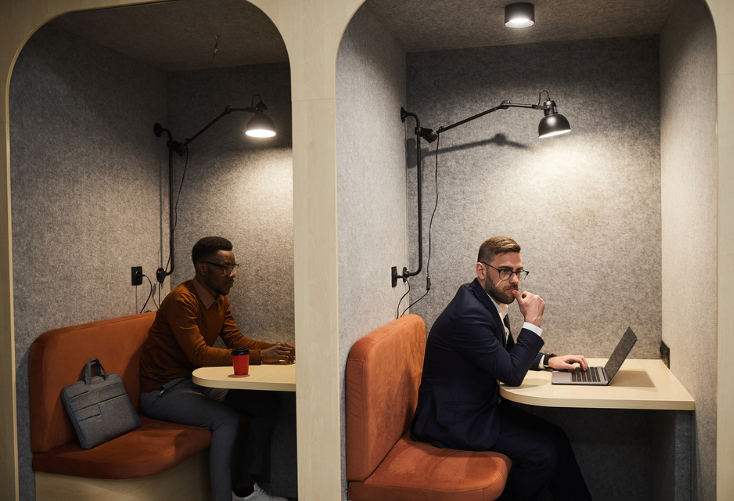Hand selected flexible workspace news from the most reliable sources to keep you ahead of the pack. We find all the latest news, so you don’t have to. Morning and afternoon updates. Stay in the know.
Here’s what you need to know today:
- WeWork’s New CMO Remains Optimistic About Future NEW
- UK Workers Want Offices Closer To Home NEW
- Refining Flexible Workplace Policies NEW
- Technology Companies Predict A Hybrid Future
- New Opportunities Are Arising For Flexible Offices
- Large Companies Realize The Benefits Of Flexibility
WeWork’s New CMO Remains Optimistic About Future
It is hard to believe that it has been an entire year since WeWork’s implosion led to an indefinite postponement of its IPO. After major concerns about the company’s financials, the company walked back on its plans to go public. This led the firm to undergo a complete restructure of its C-suite and forced it to focus back on its core business — workspaces.
In April, Roger Solé came to be WeWork’s chief marketing officer. Solé, the former CMO of Sprint who helped navigate its merger with T-Mobile, has now been tasked with helping WeWork get back on track after the coworking firm’s tumultuous year. Unfortunately, his timing was a little off.
“Beyond the noise, we then had Covid-19 on top of it,” said Solé. “And there was a lot of discussion on the future of work. Are offices even relevant? Is WeWork even something that makes sense as a business?”
However, Solé remains optimistic about the post-pandemic return to office spaces. He added that the company has been redesigning its workspaces and other services to accommodate businesses that are looking to downsize.
For instance, the company recently launched a subscription service called ‘All Access’ that provides members access to all of its 828 locations.
“Large enterprises can buy these black cards for their employees so they can go work wherever they like,” said Solé.

UK Workers Want Offices Closer To Home
According to a new survey from IWG, only 8% of UK workers are ready to make a long work commute once they return to a physical workspace. As the government recently updated guidelines that encouraged workers to continue working from home, 57% have expressed interest in having an office closer to home in the long-term.
The disdain for commuting is one of the key factors in boosting demand for offices in suburban areas after the pandemic. In fact, IWG reported a 22% increase in sales between June and August. However, sales in central London saw a 40% dip during the same time.
While Londoners are hesitant to travel to the workplace, IWG”s locations in Uxbridge and Luton have seen a 74% increase in demand.
“The changes we’ve experienced in how and where we work are here to stay. As we have seen during the pandemic, people have enjoyed working from home and have tasted the relative luxury of not having to commute,” said Mark Dixon, CEO of IWG. “This is unsurprising given a vast array of sources, from the Office for National Statistics to Princeton University, tell us continually that commuting is the least favourite part of the working day for many.”
Dixon added that although there is a clear aversion to long commutes, once guidelines permit, companies will still have a need for physical workspaces to collaborate in-person and maintain employee engagement.

Refining Flexible Workplace Policies
Over the last several months, major corporations swiftly transitioned to remote working arrangements while trying to adjust to the new norm of a pandemic-ridden society. Although the shift has had its own challenges, those who have found their footing will come out stronger than ever.
The future of work has long been predicted to be a place of flexible and remote working fueled by technology. While research indicated this transition to be slow and steady, the pandemic accelerated these changes quicker than anyone would have predicted.
Now, according to a survey from Global Workplace Analytics, 97% of North American office employees are working from home more than one day per week.
Although some data has indicated that remote working has been difficult on working parents who are juggling work and childcare responsibilities, the research indicates that 86% of respondents were more productive at home and saw little interruptions than they did in the office.
However, it is important for business leaders to provide employees with the choice to work from wherever best suits them. Adaptability is key and meeting the needs of all workers not only ensures that they are productive and satisfied, but that the company remains resilient throughout the uncertainty.
“The pandemic is impacting every individual differently, so offering ways to meet employees at their comfort level — for example, by providing the continued ability to work from home — provides meaningful support amidst the uncertainty,” said Kara Hamilton, chief people and culture officer at collaborative software company Smartsheet.

Technology Companies Predict A Hybrid Future
Several companies have realized that there are benefits to supporting both in-person and remote working arrangements. Notably, organizations like Google have already stated that they will be moving forward with a hybrid approach to accommodate the varying needs of employees and the company itself.
Months ago, Google was one of the first major technology companies to reveal it would let its employees work from home through July 2021. Sundar Pichai, CEO of Google’s parent company Alphabet, said that the pandemic led the company to realize it needed to do more to support a collaborative workplace.
“I see the future as definitely being more flexible,” said Pichai. “We firmly believe in being together, and having that sense of community is super important. … I don’t think the future is 100% remote or something. We value our offices and we value our culture, but I do think we need to create more flexibility and hybrid models.”

New Opportunities Are Arising For Flexible Offices
The Executive Centre’s CEO Paul Salnikow revealed that tenant losses came largely from the airline and tourism industry at the height of the ongoing pandemic. This led the company to let them go rather than holding them to leases they could not afford.
“The weakest clients basically asked to leave because their businesses collapsed and they no longer wanted to remain a client,” said Salnikow. “We’ve learnt as a company that when a business comes to us and says they genuinely can’t sustain payment, it’s better to let them go and eventually look for replacement clients than to go through the palaver of pretending that we’re going to enforce the lease.”
Although the company and the flexible office industry as a whole have experienced major losses over the last several months, Salnikow believes that opportunities are arising for the sector.
Salnikow predicts that companies will begin transitioning from a single permanent workspace to more flexibility as the economy remains uncertain. Rather than committing to long-term leases, companies will want a workspace on a shorter term basis that can allow them to scale up or down as needed.
Salnikow also added that companies were more keen on The Executive Centre’s private offices rather than its coworking services.

Large Companies Realize The Benefits Of Flexibility
Pinterest recently paid nearly $90 million to terminate a San Francisco office lease. While paying that amount of money to get out of a long-term lease seems counterproductive, it indicates how the view of office space is shifting among large companies.
The social media website, along with several other major companies, have started to rethink their workplace strategies as the ongoing pandemic continues to rock the global economy and simultaneously accelerating the future of work trends.
Shifting to flexible workplace operations means more than allowing employees to work from home when needed — it also indicates a company’s ability to shapeshift to whatever obstacles come their way.
Flexible businesses can easily adapt to the evolution of economic, cultural and political factors, while also improving on their own employee experience to keep workers healthy throughout all of the uncertainty.
JLL analysis predicts that 30% of office space will be flexible by 2030, making it clear that having an agile real estate portfolio will be essential moving forward. However, offices will look much different when they reopen as an emphasis on cleanliness, distancing and safety will be at the forefront.
Overall, while remote working has provided its own benefits, many workers are eager to return to the office where they can truly collaborate with their colleagues.



 Dr. Gleb Tsipursky – The Office Whisperer
Dr. Gleb Tsipursky – The Office Whisperer Nirit Cohen – WorkFutures
Nirit Cohen – WorkFutures Angela Howard – Culture Expert
Angela Howard – Culture Expert Drew Jones – Design & Innovation
Drew Jones – Design & Innovation Jonathan Price – CRE & Flex Expert
Jonathan Price – CRE & Flex Expert













